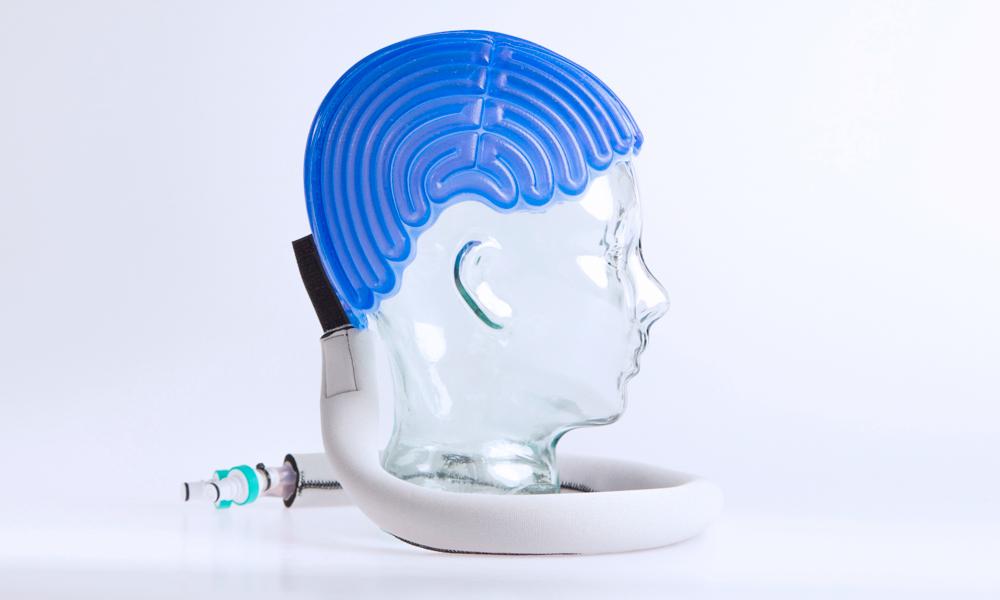What is Scalp Cooling?
Scalp cooling involves placing a cooling cap on the patient's head before, during and after chemotherapy treatment. The cooling cap works to constrict the blood vessels in the scalp, which reduces the amount of chemotherapy that reaches the hair follicles. With lower doses reaching the follicles, hair loss can potentially be reduced or prevented altogether.
How Does it Work?
Scalp cooling works by taking advantage of the difference in temperature sensitivity between hair follicles and cancer cells. Cancer cells are much less sensitive to changes in temperature than healthy hair follicles. By lowering the temperature of the scalp during chemotherapy, the blood vessels in the scalp constrict, reducing blood flow and preventing the full dose of chemotherapy from reaching the hair follicles. As chemotherapy travels through the bloodstream, it bypasses the cooled scalp areas and enters the cancer cells as normal. However, the dose reaching the hair follicles is significantly lowered.
The Cooling Process
There are a few different scalp cooling systems available, but they all work in a similar manner. Patients undergo a test prior to the first chemotherapy treatment to determine their tolerance for cold temperatures. If tolerated, scalp cooling treatment begins 30-60 minutes before each chemotherapy infusion and continues for up to two hours after treatment ends.
A special cooling cap is fitted tightly to the patient's head to ensure optimal contact with the scalp. The caps are connected to a cooling unit that circulates a coolant, usually a gel or fluid, through circuits in the cap to lower the scalp's temperature. Target scalp temperatures typically range from 59°F to 63°F (15°C to 17°C). Patients must keep the cap on for the duration of cooling to get the most benefit.
Effectiveness of Scalp Cooling
Studies show scalp cooling can prevent chemotherapy-induced hair loss in around two-thirds of patients. Success rates vary depending on the type and dose of chemotherapeutic agents used. Scalp cooling has proven most effective against alopecia caused by anthracycline-based regimens, with complete prevention possible in up to 70% of cases. Taxane-based regimens have lower success rates, around 30-50% preventing total hair loss.
For patients where scalp cooling is not fully effective, it can still reduce the extent of hair loss. Even if only a few hairs are retained, many patients report it improves their self-esteem and quality of life. No adverse effects from scalp cooling have been reported, making it a safe option with minimal side effects.
Is Scalp Cooling Right For Everyone?
While scalp cooling can be quite effective for many, it is not suitable for all chemotherapy patients. Efficacy depends on factors like:
- Type of chemotherapy drugs used - As mentioned, some regimens have higher success rates than others.
- Chemotherapy dose and schedule - Higher doses given more frequently make complete prevention less achievable.
- Individual tolerance for cold - Not all patients can tolerate the necessary scalp temperatures.
- Rate of hair growth - Slow hair growth means follicles have less time to recover between treatment cycles.
- Hair and scalp type - More diffuse scalp coverage and finer hair texture allow for better cooling penetration.
Doctors consider these variables to determine if a patient is a good scalp cooling candidate. Those expected to experience only mild alopecia may not benefit as greatly either. Overall tolerance and ability to comply with prolonged cooling times also factor into decisions.
Insurance Coverage and Costs
While scalp cooling systems and supplies continue improving, the treatments remain quite costly - typically $300-$500 or more per chemotherapy session. Unfortunately, insurance coverage varies greatly. Some private plans cover scalp cooling as they would a chemotherapy medication or treatment. Others may require meeting certain criteria or consider it experimental. Patients incurring out-of-pocket costs must weigh the financial aspect versus benefits. Hair is lost regardless, so for some, the cost cannot be justified over other priorities.
Future Advancements
Research into scalp cooling continues as scientists work to optimize success rates. Trials explore factors like earlier initiation before chemotherapy, more targeted head caps, alternative cooling methods like static magnetic fields, and drugs that may enhance its protective effects. As techniques improve, more patients may gain access to reliable hair loss prevention during their cancer treatment journeys. Scalp cooling offers great potential when made available to appropriate candidates.
In summary, scalp cooling provides a non-invasive way for many chemotherapy patients to maintain their hair and normal appearance during treatment. Though not a cure-all, it delivers emotional and quality of life benefits when effective. Continued study aims to expand its reach even further. As an additional support and comfort measure, scalp cooling stands as an example of advances enhancing whole-person cancer care.

